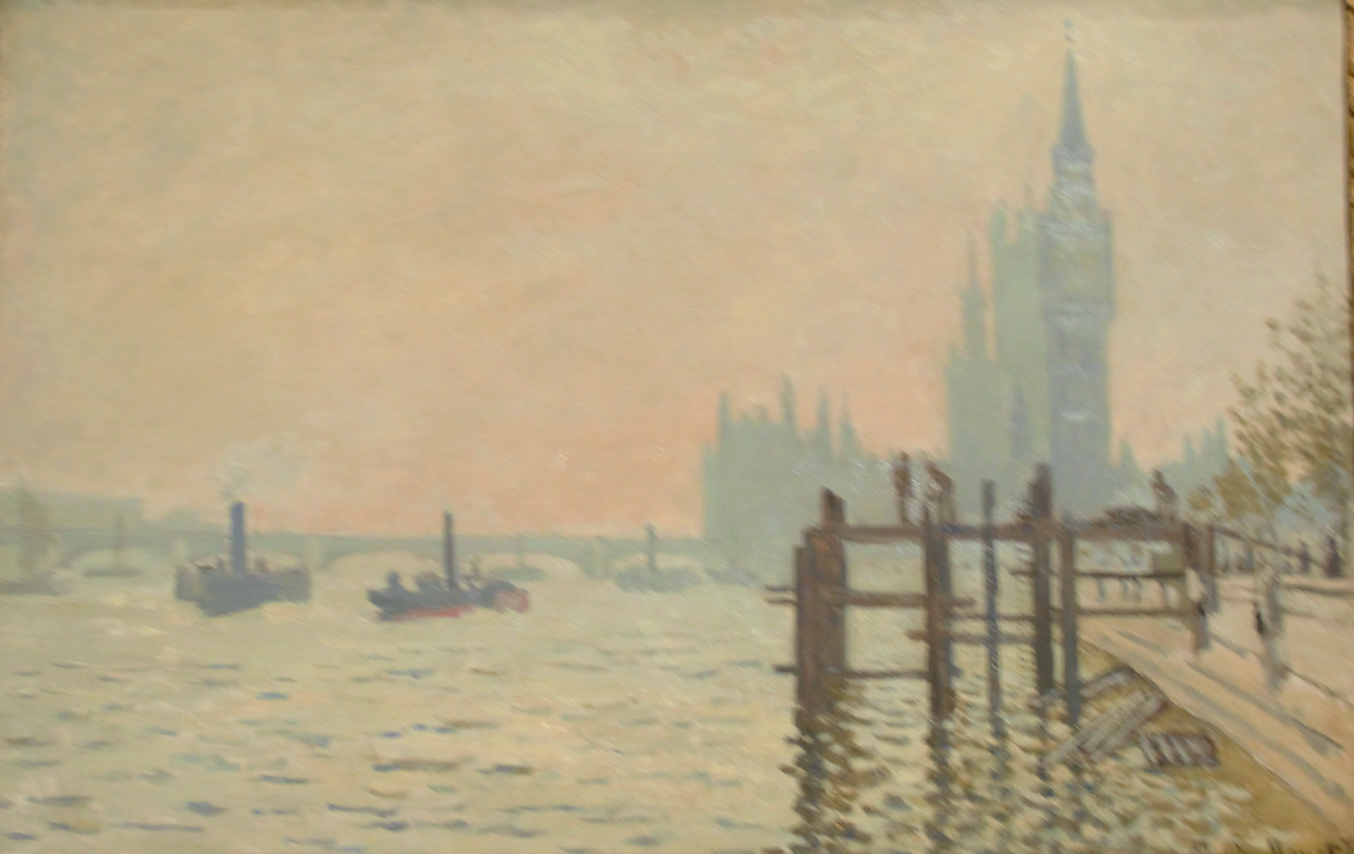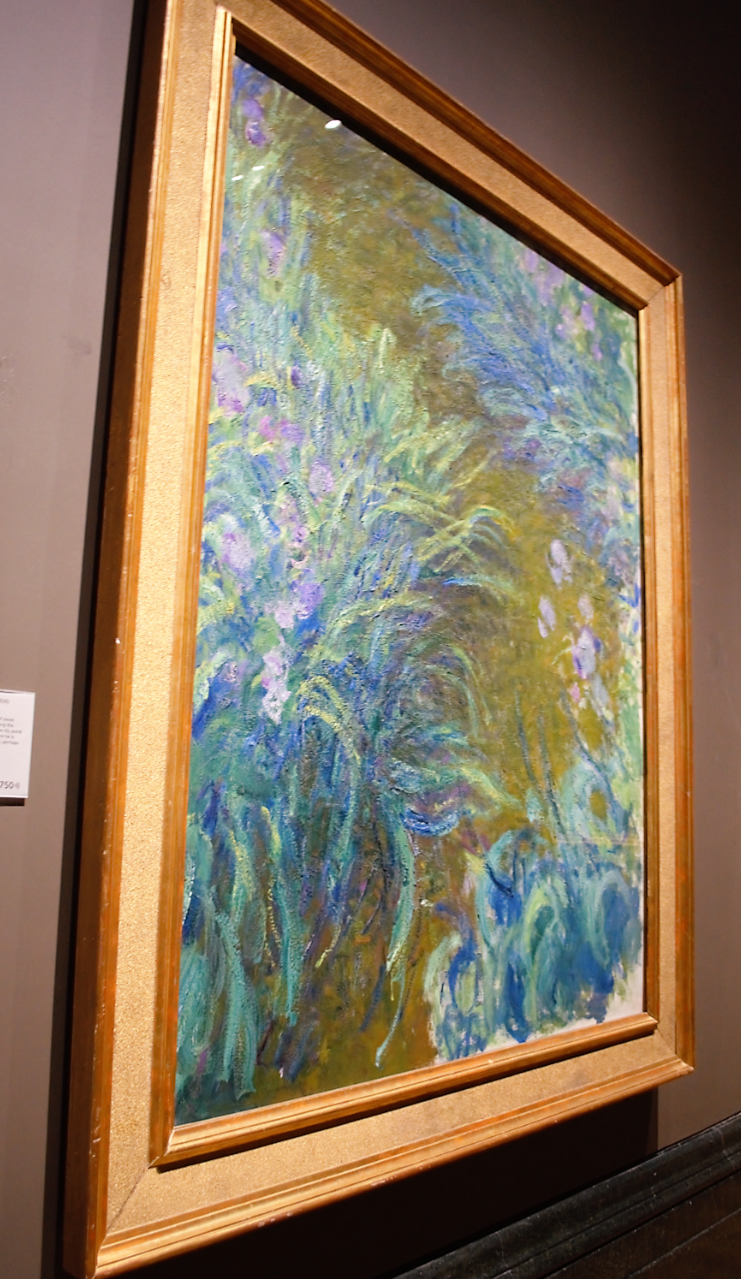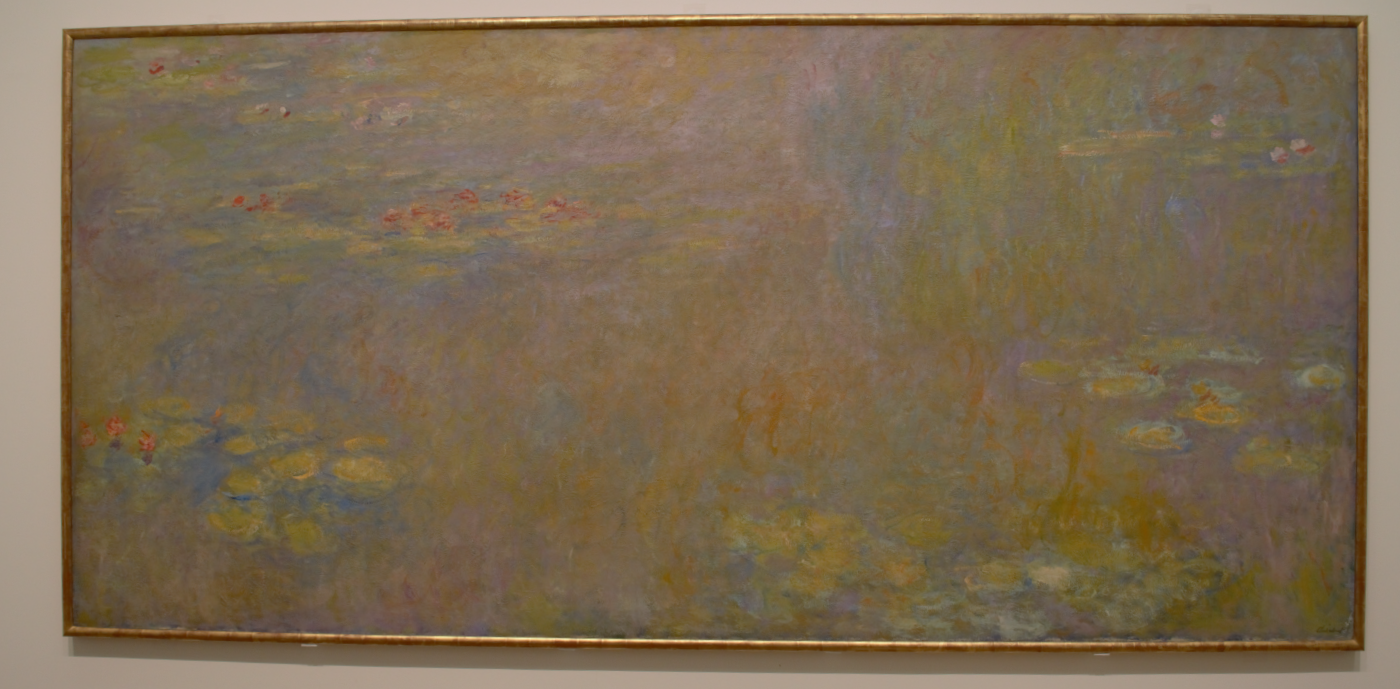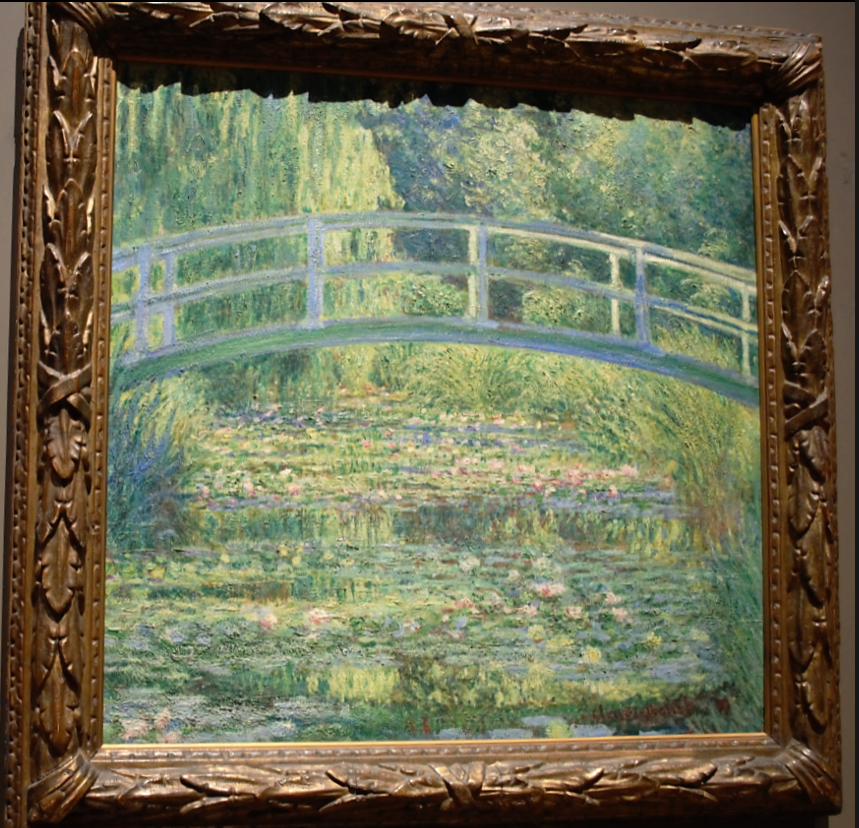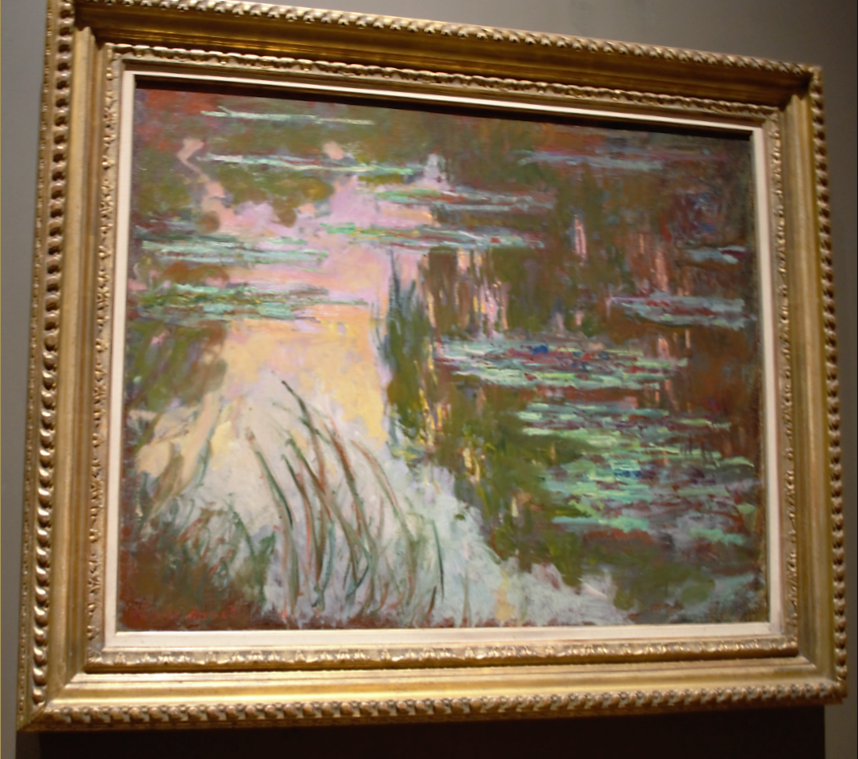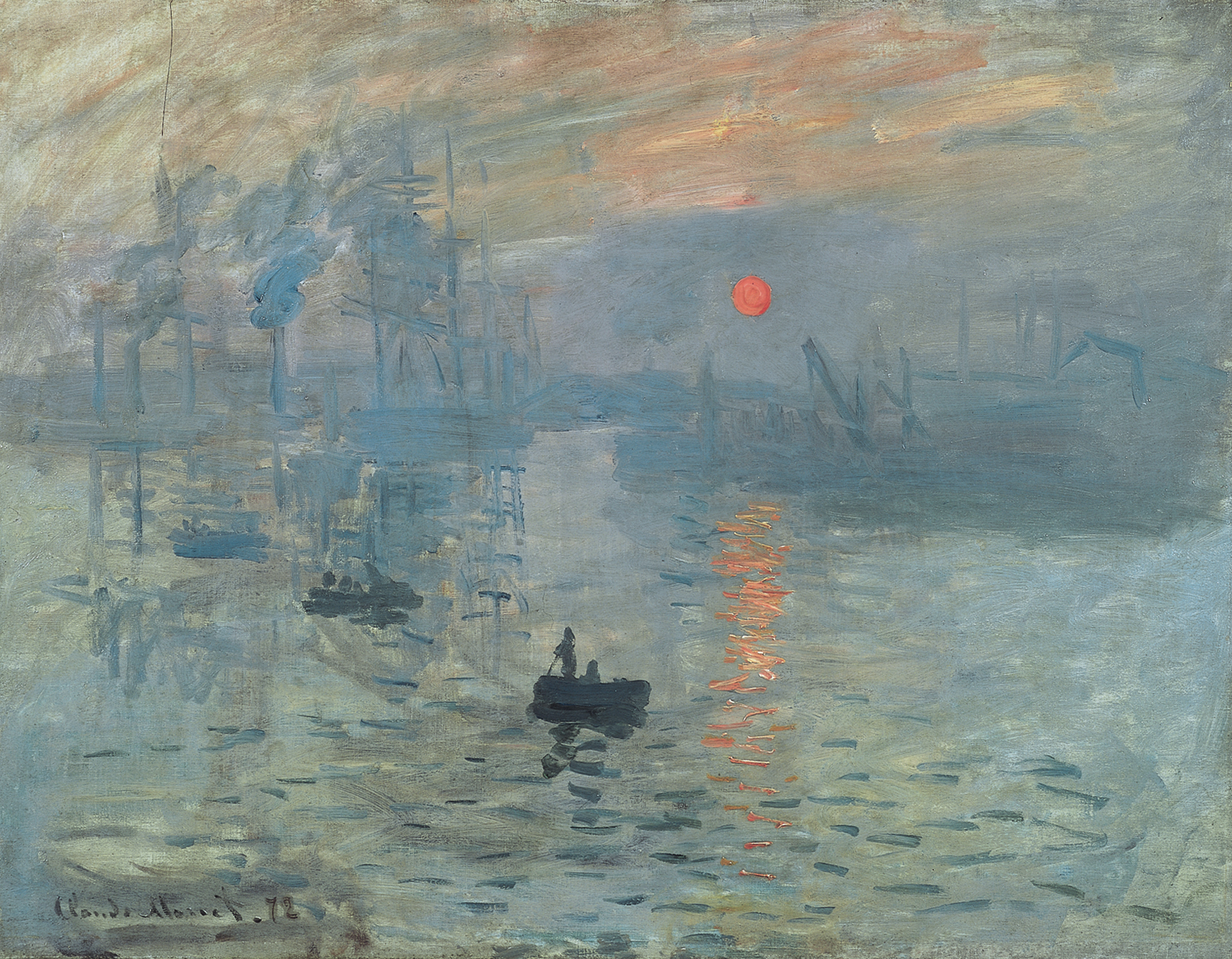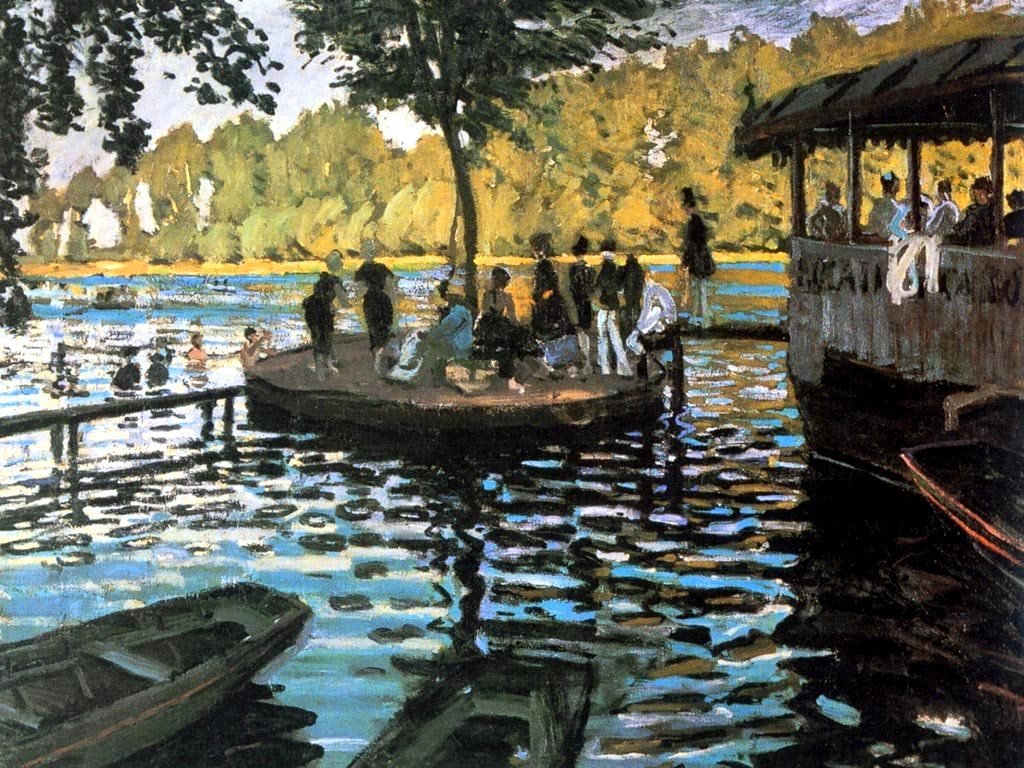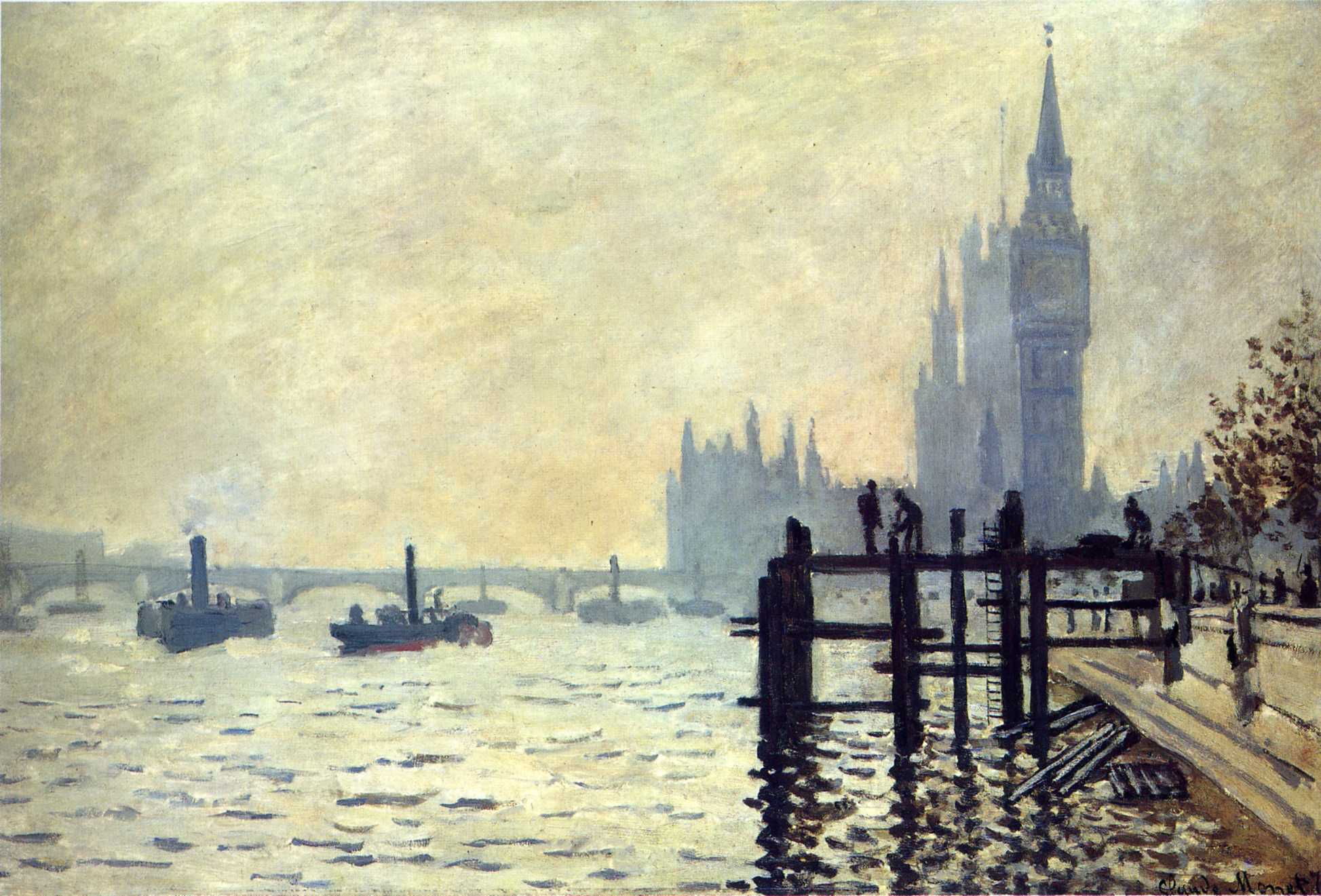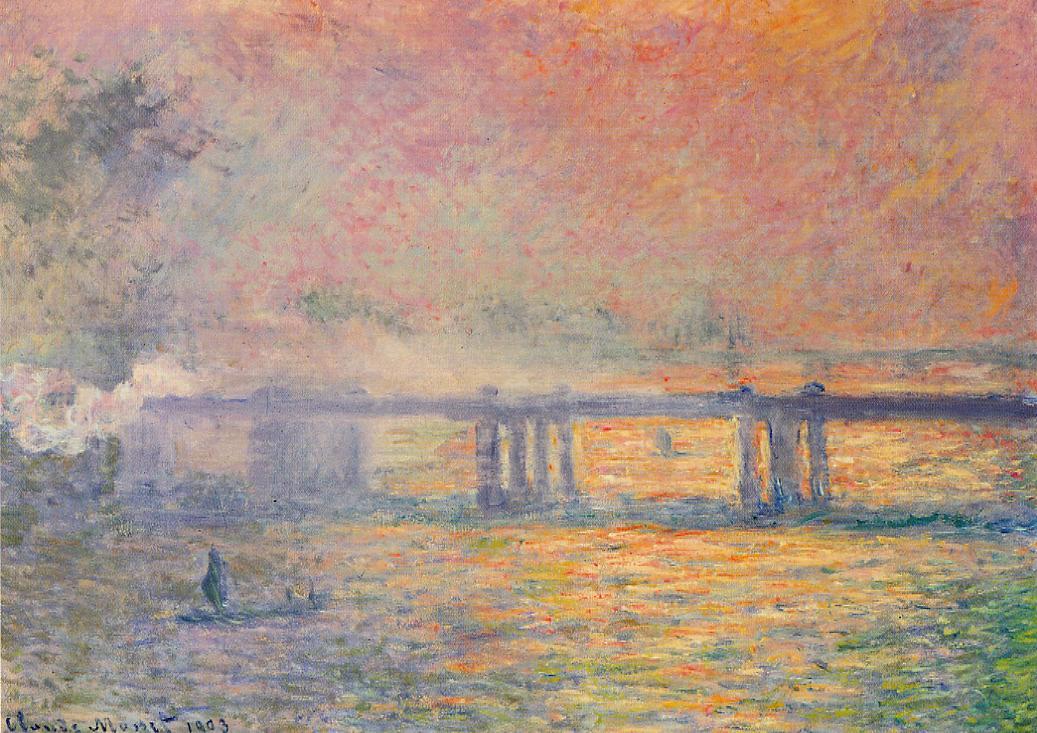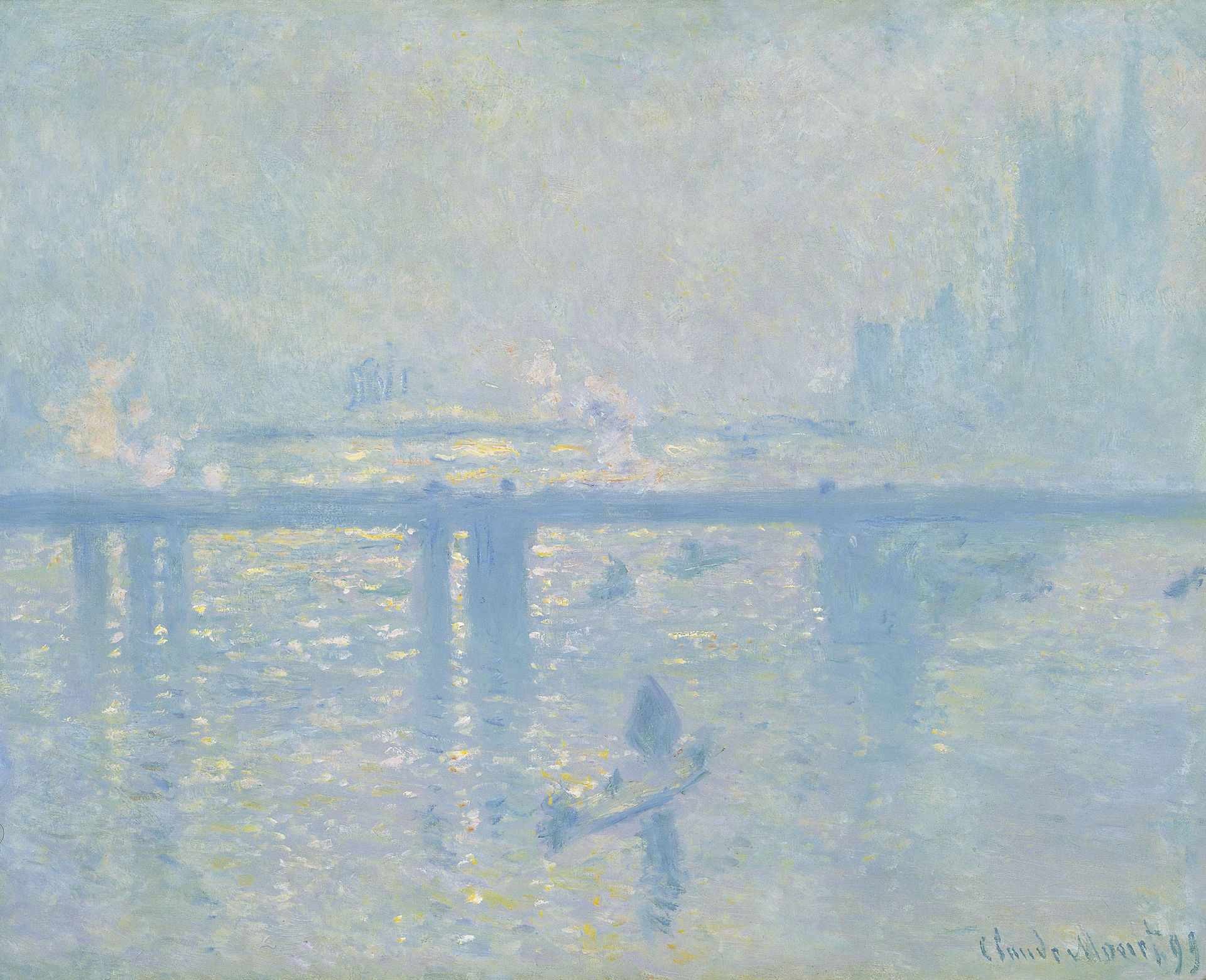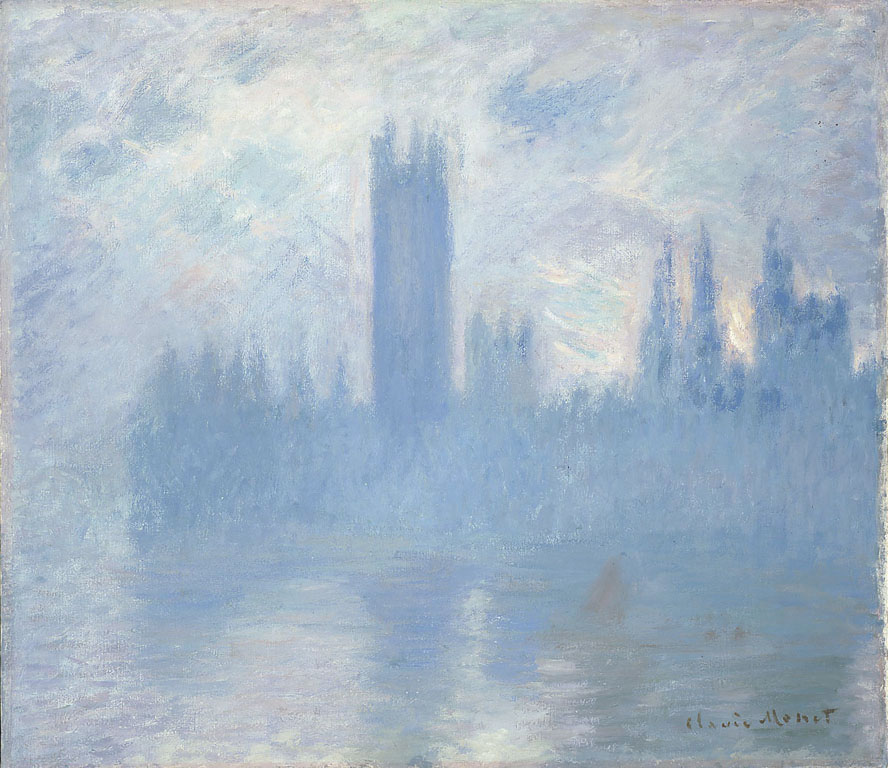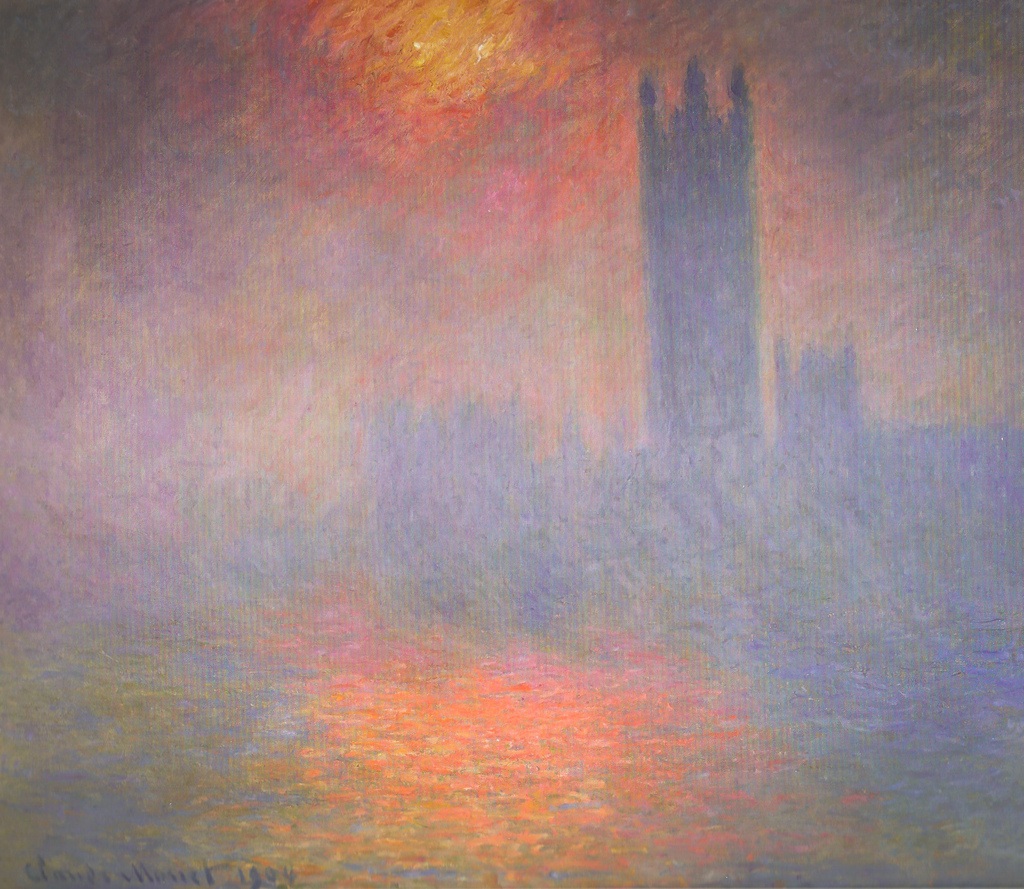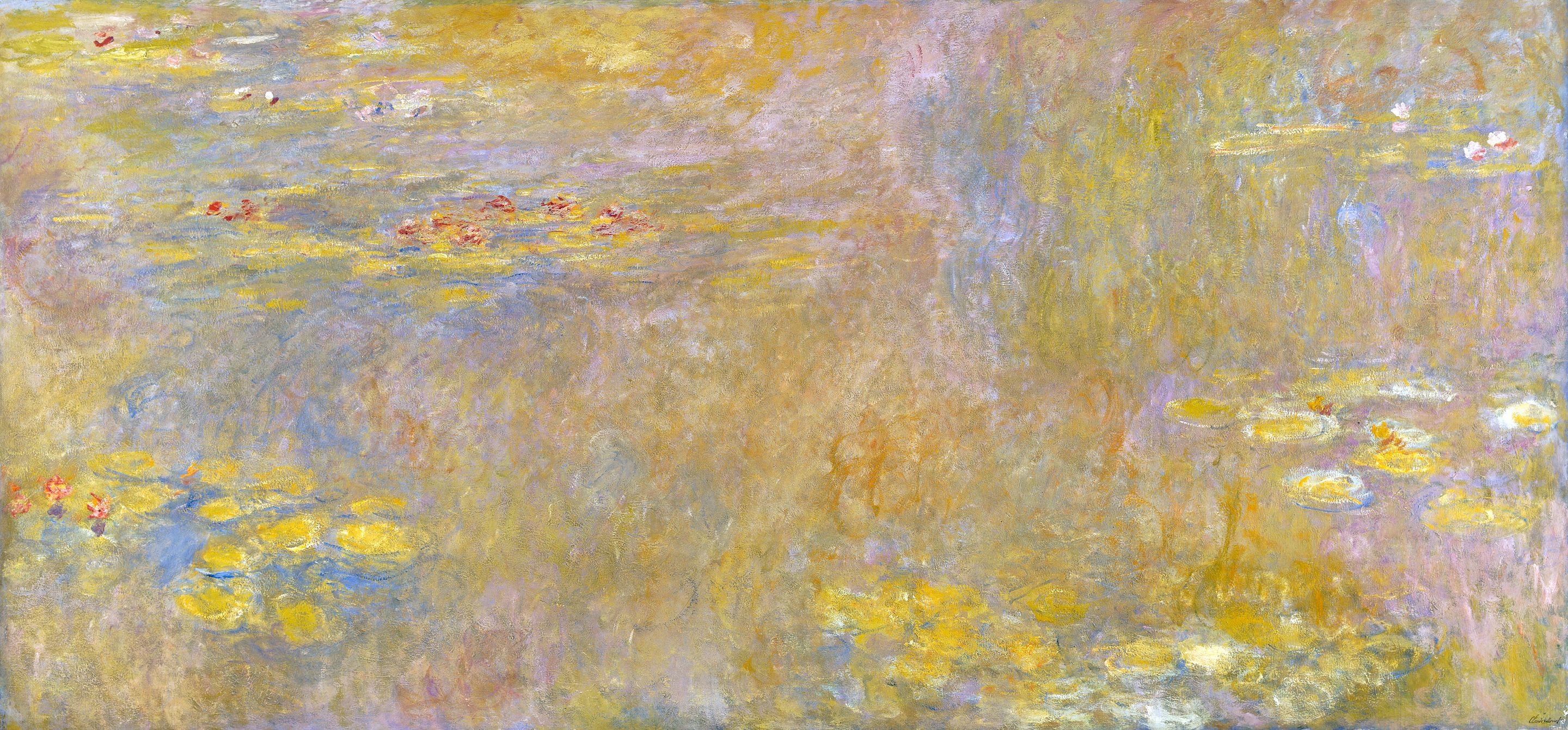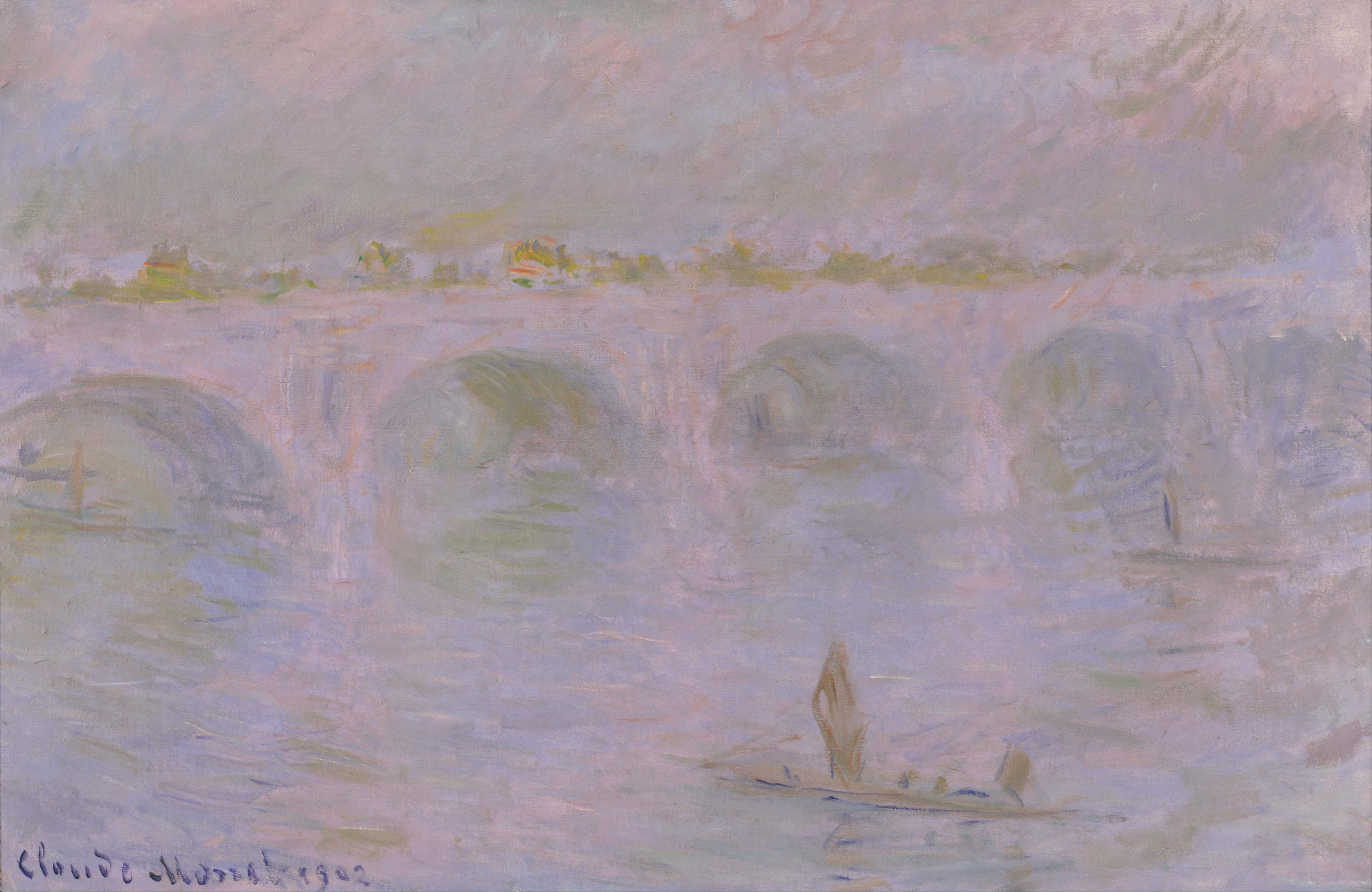Adding Pigment 2.0
From Londonhua WIKI
Monet
Claude Monet was a French artist of the Impressionist movement. This movement was named after one of his paintings called Impression, Sunrise. This is because you can only see an impression of the sunrise and the person in it because he changed a lot his subjects and how he depicted them. [1]The the viewer has to analyzed, assume and connect the dots to figure out the painting. This is not exactly abstract art but it is definitely different from traditional art at that time. Monet had many artists as inspiration and started with no knowledge of art. He became to be known one of the best-known artists in the world. His purpose was to overcome tradition and use intense brushstrokes to create an impression of a painting. He started painting in Paris and many scenes of the Seine river. He painted impressions of landscapes of the place he lived in at different times of the day. We can clearly see this in one of his biggest collection of paintings Water Lilies that he painted when he was living in Givenchy. Monet moved a lot during his life mainly within France, however, during the Franco-Prussian War, he moved to London for two years. [2]
During his time in London, he painted many of its landscapes and buildings at different times of the day as he was known for. He painted many views from the Thames including Parliament and Westminster. His short stay in London resulted in the largest series of paintings that he had yet produced. [3] Monet, as many artists admired the London fog. As Christine Corton said in her book London Fog in page 184 Monet commented " Without the fog, London wouldn't be a beautiful city... It's the fog that gives it it's magnificent breadth". I believe that he was intrigued by the fog as it went alongside this style. The fog was not traditional to him as he never saw it before in any French city. He portraits the fog as part of the landscape or the impression of the landscape which also gave him originality.
The pigment Monet added was his originality and how even though he painted the same thing many times, each painting was unique. He worried a lot about the ever-changing environment and the effects of light in his paintings. [4]Even though it was the same landscape you feel it it was a completely different environment. He focused a lot on the effects of light of the painting and used a distinct color palette for each painting. This different use of light add color provided him the irrefutable fame he currently has.
Through his life he wrote various letters when he was painting away from home. Letters that gave insights into his work.
Water Lilies at Tate Modern
Christopher Wren
"Christopher Wren (1632-1723) was the greatest architect Britain has ever known" [5] London and its skyline wouldn't be as we know them nowadays if it wasn't for Cristopher Wren. After the Great Fire of London, he was appointed to reconstruct many churches. St Paul was his biggest work with his design of the dome.
as scientist
[6]
As Lisa Jardine said in her book about Wren called On a grander scale: The outstanding life of Sir Christopher Wren, Wren was a versatile genius who could have pursued a number of brilliant careers with equal virtuosity. A mathematical prodigy, an accomplished astronomer, a skillful anatomist, and a founder of the Royal Society", Wren was a genius. He started his career as a scientist graduated from Oxford University. His most intimate friends were scientists. His connection to the Royal Society brought him into personal touch the King. [7]
as architect
as a whole
, he eventually made a career in what he described disparagingly in later life as "Rubbish" - architecture, and the design and construction of public buildings. Wren was a major figure at a turning point in English history. He mapped moons and the trajectories of comets for kings; lived and worked under six monarchs; pursued astronomy and medicine during two civil wars; exercised his creativity through the English Commonwealth, the Great Fire, the Restoration. His royal employment outlasted abdication, Dutch invasion, and the eventual extinction of the Stuart dynasty. Beyond the public achievements, Jardine explores Wren's personal motivations and passions. He was a sincere, intensely moral man with a remarkable capacity for friendship. His career was shaped by lasting associations forged during a turbulent boyhood and a lifelong loyalty to the memory of his father's master and benefactor, the "martyred king," Charles I. Everything Wren undertook, he envisaged on a grander scale - bigger, better, more enduring than anything that had gone before"
Trash
Monet
Oscar-Claude Monet (14 November 1840 – 5 December 1926) was a founder of French Impressionist painting, and the most consistent and prolific practitioner of the movement's philosophy of expressing one's perceptions before nature, especially as applied to plein-air landscape painting. The term "Impressionism" is derived from the title of his painting Impression, soleil levant (Impression, Sunrise), which was exhibited in 1874 in the first of the independent exhibitions mounted by Monet and his associates as an alternative to the Salon de Paris.Claude Monet's paintings are among the most well known and the widely enjoyed works of art in the world. His pictures of the French landscape in radiant sunshine have captured the imagination of our age, and have often been taken to exemplify the twentieth century's favorite a movement, Impressionism. It has also been frequently assumed that such sun-filled canvases were produced by an equally sunny and artist, and Monet himself has not been subjected to same scrutiny as some of his more troubled contemporaries. During much of his lifetime Monet encourage this tendency, insisting on his right to privacy and refusing to indulge in theoretical speculations about his art. [8] He presented himself in many different guises through his long career and he had many changing opinions and feelings. For example, he was a really loyal friend but he could be very selfish at times and he could be a very conversationalist at times but other times he could be truculent. His art was affected by all this and his moods. Monet’s life revolved around his art.
Monet was born in Paris in 1840 in a region of 'good' Louis -Philippe, in an environment entirely dedicated to commerce. [9]. At a very young age his family moved to Le Havre. His mother died a few years after they moved. He was undisciplined and never followed the rules. He changed until he was fourteen when his art began. He drew flower in the margins of his papers and drew caricatures of his professors. He became famous all over Le Havre as a caricaturist. He was introduced to a low repute artist back then called Bouldin. He studied with him, analyzing forms and colors. He decided to become a painter. Monet wanted to go back to Paris to pursue his passion for art and his aunt Marie-Jeanne Lecadre helped him. He had an allowance with the condition to study art. He had a gregarious youth leading the Bohemian life in Paris. However, because of his behavior his family withdrew any financial aid. He went into military service to Algeria. He mentions how this changed his life. He saw the impression of light different after this service. He returned to Paris where he meet Camille Doncieux and in 1867 they had their first son together. He was penniless so went back to Le Havre with his new family. It was not easy but they found a home and got married. They had their weeding in Paris in summer of 1870, but that autumn the Franco-Prussian War and the treat of conscription persuaded them to flee to coastal resort of Trouville. later on they took refugee in London. They returned to France though Holland and moved around the county. Many of this locations where near the Seine River. Camille had a second child and shortly died. He was now in the company of Alice Hoschede. In 1883 Alice and her six children and Monet and his two children moved to Giverny, a small village overlooking water near the Seine. He purchased a house and property and began a vast landscaping project which included lily ponds that would become the subjects of his best-known works.He was a patriarch of his family. Later in his life, he preferred to have privacy in the gardens at Giverny where he found freedom. [10]
- His short stay in London resulted in the largest series of paintings that he had yet produced.
Tate Modern 1916
Wren
Christopher Wren (1632-1723) was the greatest architect Britain has ever known [11]
Christopher Wren was born in 1632 in East Knoyle, in the most tranquil years of the reign of Charles I. His family had close contact with the court, for though at the time of his birth his father was Rector of East Knoyle, Wiltshire, were he was born. [12]
he was very soon to succeed his brother Matthew as Dean of Windsor and Registrar of the Order of the Garter. Both brothers, Royalist and High Church, were to suffer for their opinions during the Civil War. His father later moved to Windsor and Wren was educated at Westminster School and then Oxford University. He showed an early talent for mathematics and enjoyed inventing things, including an instrument for writing in the dark and a pneumatic machine. In 1657, Wren was appointed professor of astronomy at Gresham College in London and four years later, professor of astronomy at Oxford. In 1662, he was one of the founding members of the Royal Society, along with other mathematicians, scientists and scholars. Wren’s scientific work raged over a variety of fields including astronomy, meteorology, physiology and the laws of motion. He was an active member of the Royal Society for many years after he had left science for architecture. His most intimate friends were scientists. His connection to the Royal Society brought him into personal touch the King. [13]
English architecture at the time Wren began to build was in a somewhat confused state, and there was no clearly recognizable style. Wren made himself into a great architect. He had no formal training and little opportunity of knowing, at first-hand, the architecture of the Continent of his own or any other age. He built nothing before he was thirty. However, his buildings were revolutionary to the English. He was influenced by many architects at that time. Perhaps the most striking, and certainly the most influencial, was the new Banqueting House for Whitehall Palace of 1619-21. [14] The used related proportions in every part of the building and the regularity and sobriety of the window design and the restrained used of decorative detail was greatly admired by Wren. It is not clear precisely why Wren first turned to architecture, but ir well have been that, since he was known as a gifted mathematician with strongly practical turn of mind. [15]
The Great Fire of 1666 devastated the centre of London, with a loss of old St Paul's and eighty-six parish churches. Sir Christopher Wren, working with Commissioners appointed by Parliament, was responsible for rebuilding the cathedral and fifty-one of the parish churches, although the immediate need to start rebuilding made his design for an overall replanning of the City impossible. The work was funded by a tax on coals brought into the City of London. He was presented with remark for was called upon to design a great number of buildings widely differing in and intention; and by a process of trial and error, and above all of retrial, he learnt from his opportunities until he became a master of his art. One of his outstanding characteristics throughout his life was indeed his willingness to produce a scheme, to abandon it if it proved impractical, and to go on working on a problem, often even during execution until something both satisfactory and possible had been achieved. His work cannot, in fact, be fully appreciated without some reference to discarded schemes, for it is here that the striking flexibility of his mind is best displayed. It enabled him to achieve a great range of buildings one less magnificent than he might have wished, but supremely well suited to their purpose and to the circumstances which controlled their execution.
Wren's personal motivations and passions included a sincere, intensely moral man with a remarkable capacity for friendship, his career was shaped by lasting associations forged during a turbulent boyhood, and a lifelong loyalty to the memory of his father's master and benefactor, the "martyred' king, Charles I. Everything Wren undertook he envisaged on a grander scale bigger, better, more enduring than anything that had gone before. [16]
He mapped moons and the trajectories of comets for kings; lived and worked under six monarchs; pursued astronomy and medicine during two civil wars; exercised his creativity through the English Commonwealth, the Great Fire and the Restoration. His royal employment outlasted abdication, Dutch invasion, and the eventual extinction of the Stuart dynasty., he eventually made a career in architecture, and the design and construction of public buildings. he mapped the moon and the stars, investigated the problem of longitude and the rigns of Saturn, and carried out groundbreaking experiments into the circulation of the blood. His observetions on coments, meteorology and muscular action made vital contributions to the developing ideas of Newton, Halley and Boyle. He remained, nonetheless, committed to the practice of science, several of his buildings reflect the diversity of his interests. The Monument to the Great Fire was built with a subterranean laboratory; the south west tower of St Paul's was used as a vertical telescope during construction both were designed to function simultaneously as public monuments and as oversize scientific instruments. [17]
- From 1689 - 1700, Wren worked at Hampton Court Palace and amongst other projects, re-built the south front of Hampton Court and designed the pews, the panelling and the pillars supporting the Royal pew in The Chapel Royal.
-
- Wren was a major figure at a turning point in English history. A mathematical prodigy, an accomplished astronomer, a skillful anatomist, and a founder of the Royal Society The man behind the work was as remarkable as the monuments he has left us.
Avant Garde=
You have to analyze the painting and interpret what Monet wanted to express. This exactly what Monet and most Impressionists wanted, to
- ↑ House, J. (1988). Nature into art. New Haven: Yale University Press.
- ↑ Monet, C., & Kendall, R. (2003). Monet by Himself: paintings, drawings, pastels, letters. Boston: Little, Brown, Chapter 1.
- ↑ CORTON, C. L. (2015). LONDON FOG: the biography. S.l.: BELKNAP HARVARD. pp 182.
- ↑ House, J. (1988). Nature into art. New Haven: Yale University Press.
- ↑ Tinniswood, A., & Graham, N. (2005). His invention so fertile: a life of Christopher Wren. London: Royal National Institute of the Blind.
- ↑ Jardine, L. (2004). On a grander scale: the outstanding life and tumultuous times of Sir Christopher Wren. New York, NY: Perennial.
- ↑ Whinney, M. (1971). Wren. London: Thames & Hudson.
- ↑ Monet, C., & Kendall, R. (2003). Monet by himself: paintings, drawings, pastels, letters. Boston: Little, Brown..
- ↑ Denvir, B.(1987). The Impressionists at First Hand: Thames and Hudson.
- ↑ http://www.tate.org.uk/art/artists/claude-monet-1652
- ↑ Tinniswood, A., & Graham, N. (2005). His invention so fertile: a life of Christopher Wren. London: Royal National Institute of the Blind.
- ↑ History: Historical Figures. (n.d.). Retrieved June 06, 2017, from http://www.bbc.co.uk/history/historic_figures/wren_christopher.shtml
- ↑ Wren o Whinney
- ↑ Wren o Whinney
- ↑ Wren o Whinney
- ↑ Jardine, L. (2004). On a grander scale: the outstanding life and tumultuous times of Sir Christopher Wren. New York, NY: Perennial.
- ↑ Jardine, L. (2004). On a grander scale: the outstanding life and tumultuous times of Sir Christopher Wren. New York, NY: Perennial.
